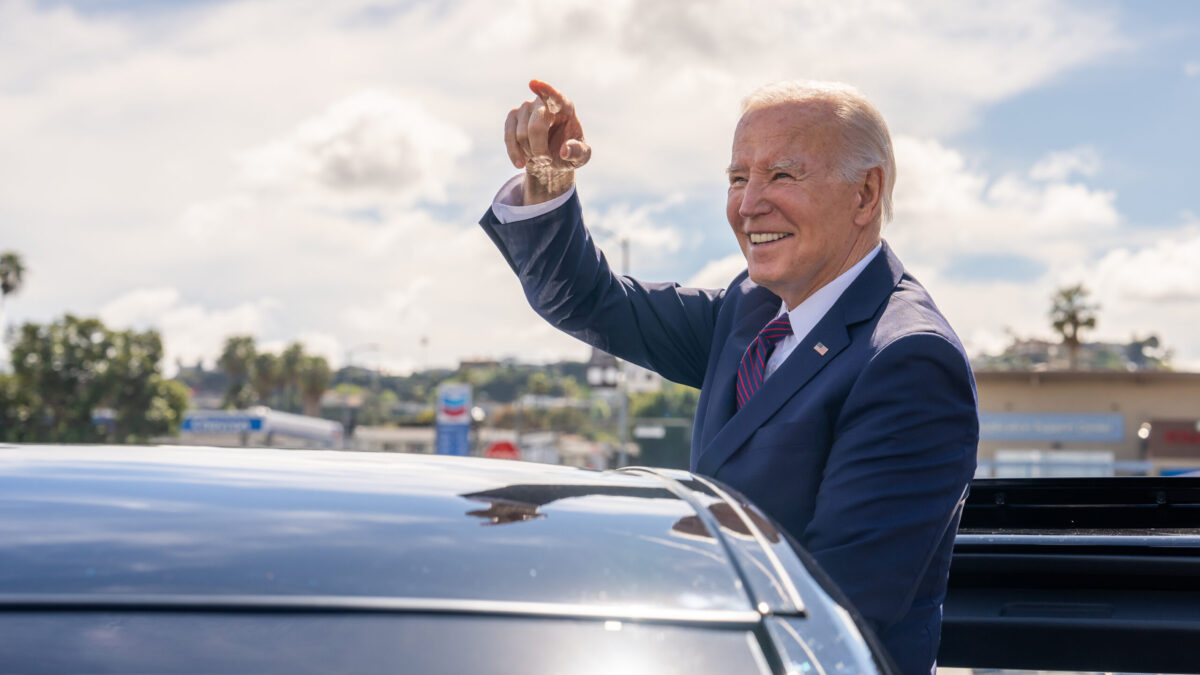
The Democratic Party, or at least its 2020 presidential candidates and new stars, are allegedly lurching significantly leftward. Sen. Bernie Sanders’ platform seems to be a center of gravity, even a bit of a throwback for relying mostly on class warfare instead of identity politics. Some see Joe Biden as the avatar of old Democratic ideas.
This may be the Democrats’ dirty little secret: most of the big, “new,” “progressive” ideas are really decades old. Most of these ideas have been flogged by the lefties who grew up among the New Left of the 1960s and ’70s, eventually dominating the party establishment while settling for neoliberalism when mugged by political reality.
Bernie just Recycles Old Ideas
Take Bernie’s signature proposal of Medicare for All, please. Single-payer health care has been Democrats’ holy grail since the days of Franklin Delano Roosevelt and Harry Truman. After Lyndon Baines Johnson got Medicare through Congress, Democrats immediately started talking up a national insurance program, which is mentioned several times in the party’s 1972 platform.
Once New Left-era boomers got to high office, Bill Clinton (who cut his teeth on George McGovern’s 1972 campaign) proposed a “health care security card” entitling every citizen to medical treatment and preventative care. In his heart, Barack Obama preferred single-payer, but was forced to settle for Obamacare.
So the current crop of Democratic presidential candidates supports Medicare for All or–in a common equivocation–”the goal of” Medicare for All. Most voters outside Iowa and New Hampshire are not policy wonks reading white papers. They just want to know candidates are on board with the vision, even if the talk is about a “broken health care system” that Democrats are largely responsible for breaking.
Sanders is also considered the godfather of the Green New Deal, although the Green Party got there first. This behemoth, reduced to its essence, would mark the return of central planning of our economy–yet another progressive idea dating back at least as far as FDR and his “brain trust” of people who thought Soviet Russia was the way of the future.
Central Planning Clothed in Green
In this case, the central planning comes clothed in green. Environmentalism is another movement born during the New Left era. In the early ’70s, Democrats focused on alternative forms of energy and included nuclear power in their plans. But the Three Mile Island accident in 1979 (which had no significant health effects) threw lefty boomers into the “No Nukes” paranoia from which they have not emerged, even while claiming Earth has only a decade or so left to take revolutionary action.
Environmentalism has always had its Malthusian streak. Left-wing cranks like Paul Ehrlich feared a population explosion, with widespread famine that did not happen (except in socialist dictatorships). Today’s progressives claim they do not want to bring kids into this doomed world, despite projections of global fertility and population decline.
Lefty boomers like Al Gore took the idea of global warming and ran with it. This last major innovation in progressive thinking on the environment came in 1992, conveniently when our defeat of the Soviet Union required progressives to find new rationalizations for anti-market politics.
The Green New Deal incorporates not only Medicare for All, but also Universal Basic Income (UBI) proposals. Presumably, the left knows their environmental planning would wreck large segments of the economy, thus requiring a much broader safety net for displaced American workers.
Welfare for All Has Deep Roots, Too
This”‘new” UBI idea dates back at least as far at Thomas More’s “Utopia,” which ought to be a clue as to its practicality. Nevertheless, UBI came back into vogue in the late ’60s, championed by the Rev. Martin Luther King Jr. in his last book, “Where Do We Go From Here?” (1967).
UBI was also advocated by Milton Friedman, while Richard Nixon tasked Donald Rumsfeld and Dick Cheney with conducting UBI experiments in the ’70s (the results were not good). Expect Democrats to feign outrage (as they do about the health-care mandate) that Republicans are not embracing this “right-wing” idea. They will forget to mention their past advocacy of guaranteed jobs programs in the ’70s.
The Green New Deal’s quixotic fascination with high-speed rail also comes out of the New Left era, when the government funded research into magnetic levitation trains. Similar projects were funded during the Clinton era (another residual boomer fixation). High-speed rail is not as successful elsewhere as the left pretends and there are myriad reasons it fails in America–yet this creaky old idea keeps getting sold as bold and new, like a bad scene from Cameron Crowe’s “Singles.”
Nevertheless, a number of Democratic candidates have signed on to the Green New Deal. Most of them voted “present” when the resolution was brought to the Senate floor. Others have decided to support “the goals of” the Green New Deal. Again, most Democratic voters do not care about the nuances.
Radical Proposals belong to the Boomers Too
Even some of the left’s most radical ideas are not new. Abolishing the Electoral College was championed by Democrats, like Birch Bayh, who were angry when Nixon narrowly defeated Hubert H. Humphrey, Jr. in 1968 with a strong third-party showing by George Wallace. Packing the Supreme Court is an idea from the Roosevelt administration; further weaponization of the courts is pushed by lefty boomers who have come to dominate the legal academy.
That most of the left’s platform is not new does not mean the ideas are not radical. To the contrary, while “radical” generally means drastic change from the status quo, the word also means “constituting or growing from a root.” The Democrats’ roots have always been in far-left ideologies. The only thing “new” about progressives’ ideas now is that there is a younger generation or two, many of whom are too poorly educated to understand they are being sold a very old boomers’ bill of goods.









